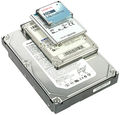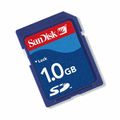Difference between revisions of "Template:Laptop Data Security"
| Line 4: | Line 4: | ||
☐ Separate any hard drive caddies and adapters from the hard drive. <br> | ☐ Separate any hard drive caddies and adapters from the hard drive. <br> | ||
☐ Tape them (along with their screws) back inside the hard drive bay. These should stay with the system unless your instructor needs them for parts. <br> | ☐ Tape them (along with their screws) back inside the hard drive bay. These should stay with the system unless your instructor needs them for parts. <br> | ||
| − | ☐ If a hard drive or other storage device is found, it should always be given to your instructor | + | ☐ If a hard drive or other storage device is found, it should always be given to your instructor.<br> |
☐ Some laptops (especially larger models) may have two hard drive bays, so don't stop looking just because you've found one. <br> | ☐ Some laptops (especially larger models) may have two hard drive bays, so don't stop looking just because you've found one. <br> | ||
<br> | <br> | ||
Latest revision as of 12:45, 24 September 2013
We are responsible for securely wiping or destroying any data storage device that is donated to Free Geek. This is the most important step in this process. In most cases this means removing hard drives from computers so the data can be wiped, but keep an eye out for other kinds of data storage devices.
Check for Hard Drives
☐ Separate any hard drive caddies and adapters from the hard drive.
☐ Tape them (along with their screws) back inside the hard drive bay. These should stay with the system unless your instructor needs them for parts.
☐ If a hard drive or other storage device is found, it should always be given to your instructor.
☐ Some laptops (especially larger models) may have two hard drive bays, so don't stop looking just because you've found one.
Check for Other Storage Devices
☐ Check the Optical Drive for disks.
- You can manually open the drive by pusing a paper clip into the small quick-release hole in the drive faceplate.
☐ Look inside and around the chassis for other less common storage devices, such as:
- 1.8” or other small-form-factor hard drives
- Mini PCI, mini-PCIe, or mSATA solid state drives (SSDs)
- SD cards or MemorySticks
- SIM cards (usually under the battery)
- Floppy disks
- PCMCIA (PC Card slot) hard drives
- Examples



